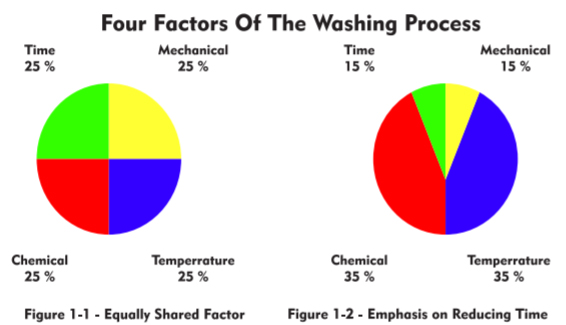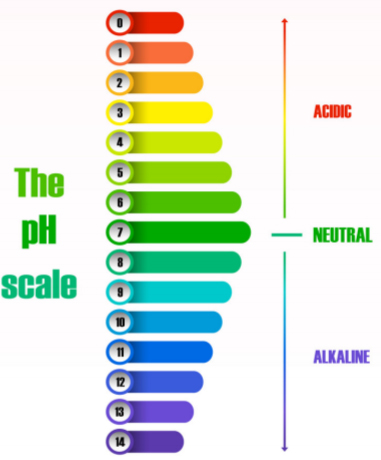Laundry Science
Home > Pages > Laundry Science
Water that has high mineral content is known as Hard water. Hard water contains bicarbonate, chlorides and sulphates of calcium and magnesium. When treated hard water with soap, it gets precipitated in the form of insoluble salts of calcium and magnesium. Hardness of water is a measure of the total concentration of the calcium and magnesium ions expressed as calcium carbonate. There are two types of hardness
Temporary Hardness is due to the presence of bicarbonates of calcium and magnesium. It can be easily removed by boiling.Permanent Hardness is due to the presence of chlorides and sulphates of calcium and magnesium. This type of hardness cannot be removed by boiling.
| German Hardness dH | mg/1 Calcium oxide | mg/1 Calcium carbonate | Water conditions |
|---|---|---|---|
| 0 - 3 | 0 - 3 | 0 - 50 | Soft |
| 3 - 6 | 30 - 60 | 50 - 100 | Moderately Soft |
| 6 - 12 | 60 - 120 | 100 - 200 | Slightly hard |
| 12 - 18 | 120 - 180 | 200 - 300 | Moderately hard |
| 18 - 25 | 180 - 250 | 300 - 450 | Hard |
| 25+ | 250+ | 450+ | Very Hard |


Surfactants, called surface active agents, are derived from fats having both polar and nonpolar characteristics. This property allows surfactants to lower the surface tension- the attraction between molecules that causes a cohesive force between a liquid's molecules- within the interaction of oil and water. Another property is its ability to form an elastic-like membrane between liquids to allow the grease or dirt to be captured in the micelle. The micelle forms a structure such that, the phospholipid molecules arrange themselves in spherical form with the hydrophobic (repel water) heads facing out and the hydrophilic (afnity for water) tails facing inside the sphere. However, there are multiple types of surfactants depending on the characteristic of their hydrophilic head group and their interactions with ions The different types of surfactants include anionic, nonionic, cationic, and amphoteric.

Due to their hydrophobic and hydrophilic tail and head groups and their ability to form micelles, surfactants are quite useful when incorporated into laundry detergents.
A micelle, is the spherical structure that forms around the oil stains as the hydrophobic tails are able to interact with the nonpolar oil stains. As a part of laundry detergent, the surfactants can perform multiple roles to remove the stains out of clothing. Their three-step process includes being able to penetrate and wet the fabric, loosen the soil/dirt in the fabric, and bring the soil particulates together to suspend them in the solution So, when the surfactants in detergent are mixed with water, the hydrophilic head groups attract to the polar water and the hydrophobic tails face away from the water. These surfactant molecules gather near the surface of the water and the accumulation of surfactants causes a weakening of the hydrogen bonding between the water molecules causing there to be lower surface tension. The lowering of the surface tension allows the surfactants to get through and 'wet' the fabric. Next, when the surfactants come into contact with the oil or grease stain, the hydrophobic tails of surfactants attract to the nonpolar oil molecules. Thus, the surfactants create almost a sphere around the oil molecules with the nonpolar hydrophobic tails facing in and the polar hydrophilic heads facing out as they are attracted to the water molecules. So, although the polar and nonpolar substances do not mix, the oil molecules become suspended in the water since they are surrounded by the surfactant molecules. This suspension effectively allows the fabric to be cleaned as the surfactant molecules have surrounded the oil stain which can easily be washed away.
Design By Prasadpro.in